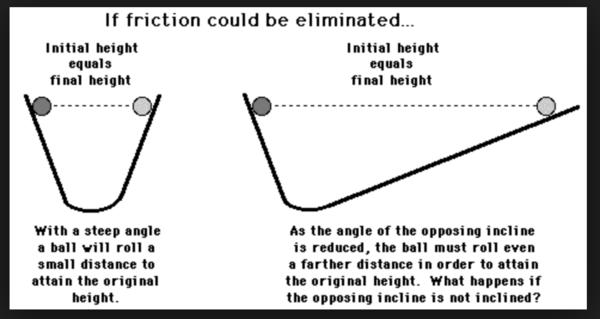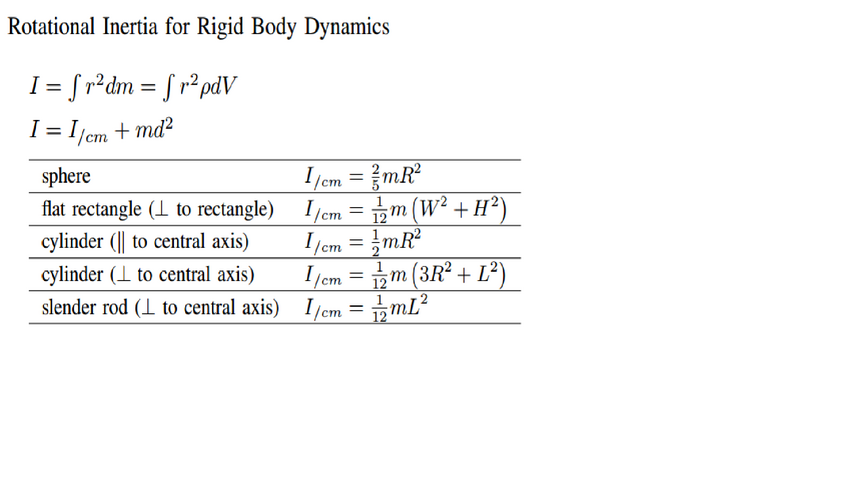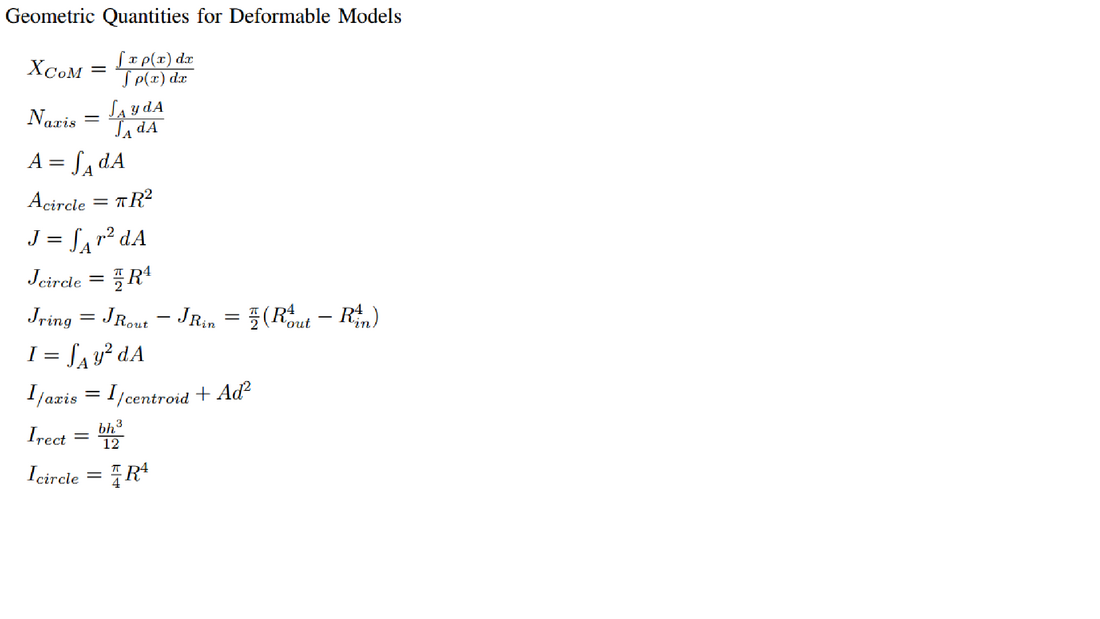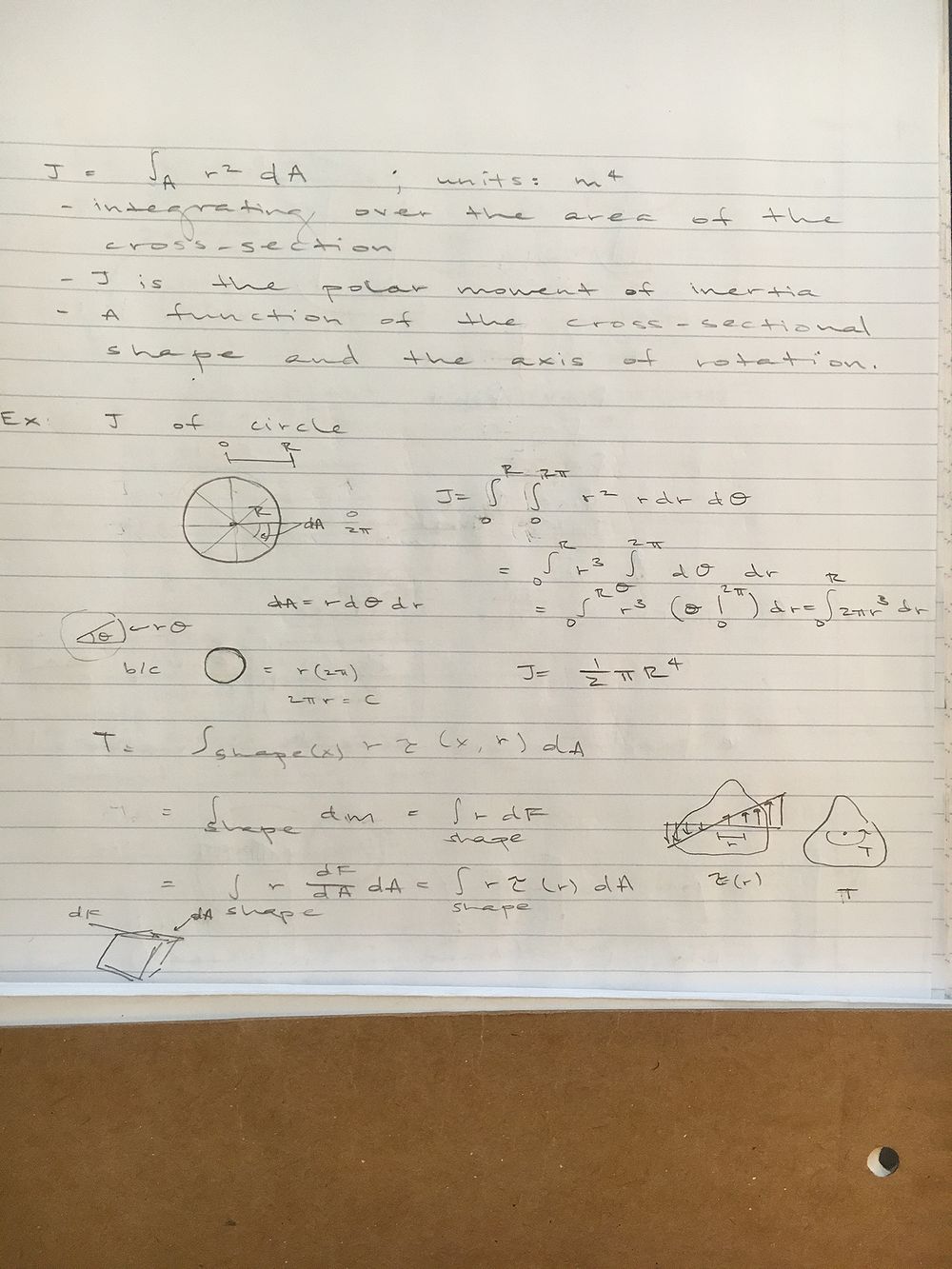Inertia
"Claimed by Zachary Parham Fall 2018'
Inertia is the name for the concept behind Newton's first Law of Motion. It is a core concept of kinematics which states that an object tends to resist changes in velocity. An objects velocity will not change unless there are unbalanced forces acting on it. This means that all non-zero resultant forces on a cause acceleration (not velocity). Forces on a body are easy to identify through a Free Body Diagram, through which you can determine the magnitude and direction of forces. If the sum of the forces in all directions are zero, then the object does not accelerate. It could, however, be moving with constant velocity.
The Main Idea
Inertia allows us to understand a key concept of kinematics which is that forces cause a change in velocity (acceleration). Furthermore, this acceleration is inversely proportional to the mass of the body.
History
Before Newton's Laws of Motion came to prominence, academics worked based off of their observations that objects on Earth always ended up in a resting state no matter the initial velocity or mass. This observation was actually due to the presence of friction. Friction is a force that acts in the opposite direction of motion. Without friction, a ball rolling across a surface would continue at the same velocity until an outside force acted upon it. This was counter-intuitive for people at the time, however, they had no other way to explain the constant motion of heavenly bodies based on the Copernican model of a heliocentric solar system. For, the only force acting on bodies in space is that of gravity, which causes a radially inward acceleration and a constant orbital velocity. Since the force from gravity didn't accelerate or decelerate the planets along their orbits, and no other forces acted on them, it could be proven that objects do not tend to decelerate on their own.
Galileo performed an experiment with two ramps and a bronze ball. To begin, the two were set up at the same angle. Galileo observed that if a ball was released at one height, it would roll to the same height at which the ball was released. He then experimented with altering the angle of the second ramp. He concluded that even though it may take longer, when the angle is smaller, the ball will still roll up to the same height. Because the height was conserved, Galileo believed that if a ball was rolled from a ramp to a flat surface, it would stay in motion unless a force stopped it.
Calculations with Inertia
Mass denoted by m is more accurately referred to as inertial mass. That is because the true definition of mass is a body's resistance to motion. Oftentimes mass is incorrectly thought of with regard to weight, which is the force of gravity acting upon a body. Inertial mass is present in a majority of kinematics equations, such as F=ma, and p=mv.
The formula for the standard moment of inertia, typically denoted as I, depends on what the particular statically determinate object is as well as its rotational axis.
Calculating the polar moment of inertia, typically denoted as J, depends on what the deformable body is and also depends on the rotational axis; the cross sectional area, distance from the center of mass, and projected deformation are also key components. J comes from the relationship between the total internal torque at a cross section and the stress distribution at a cross section.
Inertial Reference Frame
Reference frames are important for how velocity and acceleration are perceived. Imagine a person sitting in a car moving at a constant speed due north. To that persons left there is a truck moving at the same speed due north. To the persons right there is a pedestrian moving much slower but in the same direction. Think of the reference frame as the point of view of the person in the car. From their perspective the truck would be standing still and the pedestrian would be moving backwards. This is because in this reference frame the person in the car is being treated as a fixed point. All motion is perceived relative to that fixed point. The distance between the car and the pedestrian is increasing which is why the pedestrian appears to be moving away.
Examples:
If object A is moving at 1 mph and object B is moving behind object A it at 2 mph, how fast is object be moving relative to object A?
-In this example from the perspective of object A, object B is approaching object A at 1 mph
What if object A is moving 1 mph towards object B?
-In this example from the perspective of object A, object B is approaching object A at 3 mph
Important Concepts:
-The velocity of the reference frame needs to be taken into consideration when computing inertial reference frame problems.
It's important to note that this concept also applies to acceleration. If someone were to drop a ball from an accelerating car the ball would appear to have a force accelerating it in the reverse direction. This force would not actually exist. From the perspective on someone standing on the side of the road the ball would appear to move in the direction of the car (inheriting the velocity of the car) and downwards ( due to gravity).
Example: Person A is in a car accelerating North at 15 m/s^2. Describe the motion of a ball dropped from the car after 5 seconds.
-The ball would appear to accelerate down at 9.81m/s^2 due to gravity, and would move 75 m/s north.
Describe the motion of the ball in reference to the car.
-The ball would appear to accelerate down at 9.81m/s^2 due to gravity, and would accelerate 15m/s^2 south. -keep in mind the ball isn't truly undergoing that acceleration south. It just appears to from that reference frame.
Examples
Simple
A simple example of inertia is the classic trick of pulling a table cloth off of a table while the plates and cups stay in place. The tablecloth is acted upon by a force applied through the persons arm, while the only horizontal force acting on the plates and cups is friction. The person performing this trick must keep that in mind because a tablecloth with too high of a friction coefficient will act on the plates and cups and cause them to accelerate off of the table. It is clear from this example, though, that the plates and cups remain still unless acted upon by an outside force due to their inertia.
Meddling
Area Moment of InertiExample.jpg:
Difficult
Polar Moment of Inertia Example:
See also
Newton's Laws and Linear Momentum




